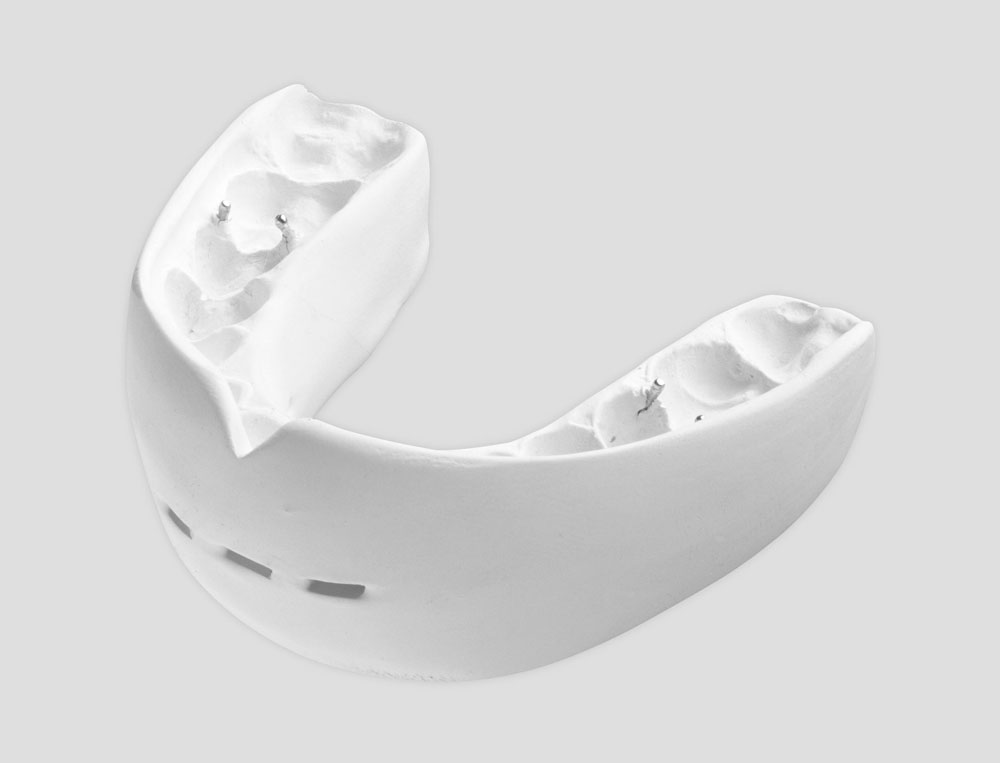Tooth positioner
At the final stage of a complete orthodontic treatment, a positioner can be used to maintain teeth in their corrected positions. If need be, this appliance can also provide minor corrections on the rotations, interdental space and torque of incisors (upper or lower). Furthermore, it can improve vertical and horizontal overbite, the curb of Spee and the width of arches. Finally, in order to stimulate teeth to resume their proper positions, or even to erupt, patients should bite into their appliances. It takes three to four weeks to fabricate a positioner. Most particularly for this appliance, orthodontic brackets and bands must be removed when the tooth positioner is placed in the mouth. It should be noted that doing so when taking imprints increases risks of relapse. When positioners are fabricated, the stone models are scraped meticulously in order to remove the brackets and bands. The teeth are then separated one at a time while their proper widths are carefully kept. The teeth are then placed in the wax in the position indicated on the prescription. To make their task easier, dentists are provided with prescription forms on which they indicate the detailed modifications to be made to the tooth alignment, in order to encourage an adequate intermaxillary relationship.
In general, a hinge-like articulator is used for mounting teeth. It should be noted that using a precision articulator provides a more stable occlusion. Consequently, during lateral and protrusion movements, interference between the two maxillaries is reduced. Dentists are encouraged to mount their models on such articulators. SAM or DENAR brand-name precision articulators are particularly interesting in as much as they enable stone models to be transferred from one articulator to another. With the other brands (HANAU, WHIP MIX), dentists must provide the articulators, since these are not interchangeable.
Material required for manufacturing
– Upper stone model
– Lower stone model

